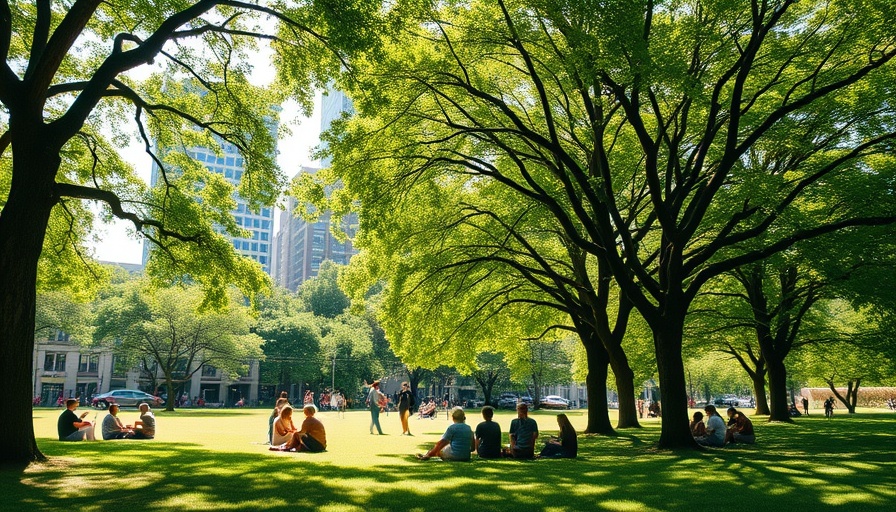
Protecting Evanston: Trees as Nature's Air Conditioners
During the scorching summer months, the green giants of Evanston—its trees—are more than just scenery; they are critical components of urban life, offering shade, beauty, and even clean air. As we face increasingly extreme weather assisted by climate change, caring for these trees is essential to maintaining community comfort and resilience.
Understanding the Urban Tree Canopy
Research indicates that urban areas with significant tree canopies experience lower temperatures. In Evanston, a vibrant network of trees spans properties and municipal spaces, creating a resilient microclimate that benefits all. According to the Chicago Region Trees Initiative, areas lacking this green cover tend to heat up more quickly during summer heat waves.
The Effects of Climate Change
Tom Klitzkie of Nature’s Perspective Landscaping highlights a worrying trend of more frequent and severe heat waves in Evanston. Coupled with moderate drought conditions noted by the U.S. Drought Monitor, these climatic shifts pose challenges for urban trees. The intertwined struggle of high humidity and intense rainfall affects not only residents but also the health of local trees, adding layers of complexity to tree care.
Watering and Mulching Techniques for Healthier Trees
To keep these trees thriving, Leslie Shad from Natural Habitat Evanston urges residents to engage in proper watering and mulching. The Morton Arboretum recommends a deep, slow watering process, suggesting residents provide 10-15 gallons of water weekly to ensure the roots receive adequate hydration. Mulching can retain soil moisture and protect trees from physical damage but must be done carefully. Mulch should lie 2-4 inches deep around the trunk, but not touching it to prevent rot.
Side Effects of Chemicals
Insect presence on trees is often beneficial; however, many homeowners unknowingly harm their trees with herbicide use. A recent case involved redbud trees suffering from herbicide poisoning leading to stunted growth. Municipal regulations are evolving, and awareness is crucial. Residents are now rethinking their landscaping practices to protect both trees and local wildlife, such as earthworms and fireflies, promoting a more diverse ecosystem.
Pruning for Longevity
Pruning is vital for maintaining tree health. Guidelines recommend removing dead or damaged branches to prevent disease spread and improve airflow. Regular assessment can help detect issues, especially as changing climates foster conditions for pests and diseases.
Your Role in Tree Care
Every homeowner and property manager shares the responsibility of caring for Evanston's trees. By recognizing the interconnectedness of our urban forest and our community's health, we can drive changes that support both. Collaboration among residents, local governments, and organizations can lead to initiatives that enhance our beloved environment.
Get Professional Help When Needed
If you're unsure about your tree care techniques or want expert assessments, consider calling in the pros! For specialized lawn care and seasonal maintenance, reach out to Everett Lucas at 231-450-3414. Together, we can ensure that the trees of Evanston continue thriving for generations to come.
 Add Row
Add Row 
 Add
Add 


Write A Comment